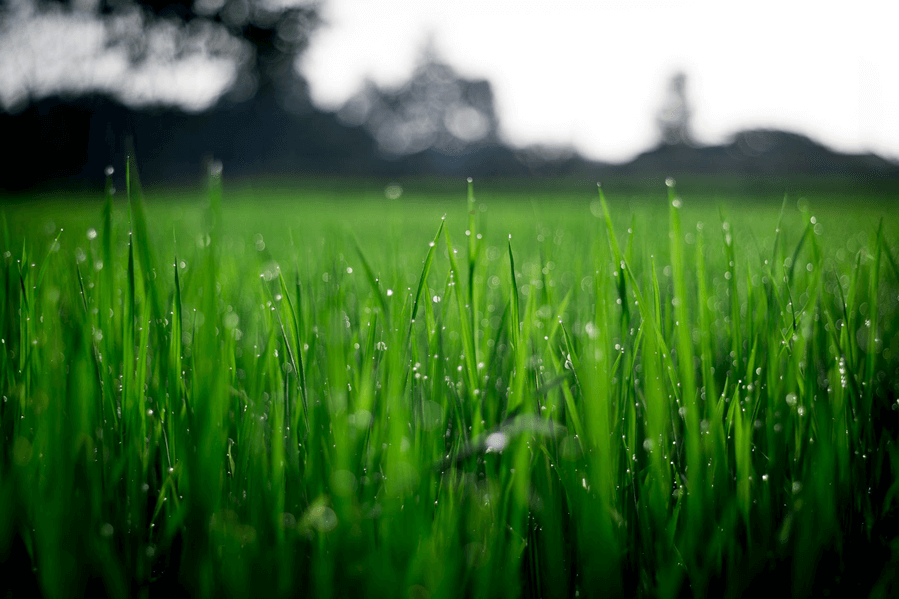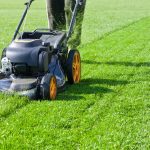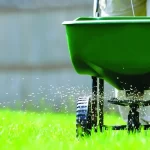Almost every American homeowner wants a thick, lush, and healthy lawn in their home. And no wonder why; a lawn is a great investment! You get an aesthetic open-air spot to host your parties and Bar B Qs, a homely place to have a little outdoor fun with your kids and pets, and a peaceful little hideout away from the rushing, fast-paced world!
But with rewards come challenges, and growing your dream, flourishing green lawn is not a piece of cake. Contrary to what the average homeowner thinks, lawn care is more than just cutting the grass when it grows too long. A lot of things go into growing a vibrant, green, and thick lawn that is aesthetically pleasing and attracts everyone’s attention. One of the most important aspects of effective lawn care is proper and effective fertilization!
Lawn fertilizers feed your lawn, providing grass and plants with all the essential nutrients needed for optimum growth. Not only do they improve your lawn’s health and give it a vibrant green color, but they also kill weeds and pests!
There are many different fertilizer types and options available in the market, and for someone completely new to lawn tending, choosing the right one for their lawn based on its soil type and health can be a bit of a snag. Let’s discuss and understand different types of fertilizers and learn exactly how you can choose the right one for your lawn!
What Are Lawn Fertilizers?
Before we begin discussing different fertilizer types, let’s first understand what fertilizers are. Plants require a total of 17 nutrients for optimal health and growth. Of these 17 nutrients, 3 are macronutrients (required in large amounts, namely Nitrogen, Potassium, and Phosphorus), while others are micronutrients (required in fewer amounts).
Soil contains almost all of these nutrients, but they dry up after a certain period of time due to various natural or man-made reasons. This nutrient deficiency causes poor plant health (yellow leaves, weaker roots, and shoots) and is countered by replenishing the soil with all the essential nutrients with the help of fertilizers!
In this way, fertilizers are actually nutrient-rich food for your lawn that promotes good health and optimal, rapid growth of your grass, lawn plants, and trees, resulting in a lush green yard! In addition to that, these fertilizers also improve the overall soil quality and kill weeds and pests!
Nitrogen, Phosphorus, and Potassium: The Essential Nutrients for Plants
Out of the 17 nutrients plants require, Nitrogen, Potassium, and phosphorus are the most essential. These three nutrients, also known as macronutrients, are grouped together as NPK (N for Nitrogen, P for Phosphorus, and K for Potassium).
Nitrogen is essential for the health and growth of leaves. It provides the leaves and grass blades with a vibrant green color. Plants that are deficient in nitrogen develop yellowish leaves, which are more prone to wilting.
Phosphorus is essential for root health. Plants that have sufficient phosphorus in their soil develop strong and thick root networks, which also helps prevent weed growth.
Potassium is a necessary element for one of the most important plant processes: photosynthesis. In addition to that, potassium is important for the overall optimal health of the plant.
Fertilizer Labels: What Do They Mean?
If you’ve ever visited a green store and checked the fertilizer bags there, you might have noticed that each fertilizer type is labeled with a certain combination of numbers, such as 10-10-10, 25-15-30, or 45-5-5. Many homeowners looking to apply fertilizers to their lawns usually don’t know what these numbers mean, but they give some extremely important information.
These codes are actually the ratio of Nitrogen, Phosphorus, and Potassium in the bag of fertilizer. For example, if a 1-kilogram fertilizer bag is labeled 25-10-30, it will have the following amounts of N, P, and K.
Nitrogen – 25 percent (0.25) times 1000 grams, which is 250 grams
Phosphorus – 10 percent (0.10) times 1000 grams, which is 100 grams
Potassium – 30 percent (0.30) times 1000 grams, which is 300 grams
This ratio helps us select the ideal fertilizer type for our lawn based on the overall amount of macronutrients present in its soil. For example, if your lawn soil has adequate amounts of phosphorus and potassium but is deficient in nitrogen, a fertilizer with a high nitrogen ratio will be suitable and give the best results.
Different Types of Fertilizers
There are a lot of different types of fertilizers available in the market, here are the most popular varieties:
Organic Fertilizers
Fertilizers made from organic matter are called organic or natural fertilizers. These fertilizers are most commonly made from manure, compost, bone and blood matter, animal feces, microbes, agricultural waste, and other natural waste materials. Compared to other fertilizer types, organically made fertilizers slowly release their nutrients and generate long-lasting effects.
Organically made fertilizers are safe to use around animals and children and do not disturb or kill the beneficial microorganisms present in the soil. In addition to that, natural fertilizers greatly improve the overall soil health by making it more porous, improving its overall water and nutrient retention ability, and balancing soil pH.
Synthetic Fertilizers
Fertilizers made artificially in the lab with the help of different chemicals and formulas are called synthetic fertilizers. Unlike common belief, synthetic fertilizers are not entirely made of pure chemicals, but these fertilizers are largely made from non-biodegradable waste such as glass bottles, plastic waste items, aluminum cans, and petroleum byproducts.
Synthetic fertilizers release their nutrients very quickly in the soil, giving rapid results. However, they are hazardous as they contain harsh chemicals and cannot be used around pets and kids.
Slow-Release Fertilizers
Slow-release fertilizers discharge their minerals and nutrients gradually over a long period of time. Unlike quick-release fertilizers, slow-release fertilizers do not discharge their minerals and nutrients all at once; rather, they allow these substances to slowly mix into the soil, which has many benefits.
One of the biggest benefits of slow-release fertilizers is that they save you from the hassle of frequent fertilization. You can apply these fertilizers once, and they’ll provide your grass and plants with a consistent supply of nutrients throughout the season. In addition to that, these fertilizers lower the risk of fertilizer burns, nutrient runoff, and leaching.
Quick-Release Fertilizers
As the name suggests, quick-release fertilizers quickly release their nutrients into the soil. These fertilizers work amazingly as a quick fix for stressed plants. In addition to that, quick-release fertilizers are best for use during early spring as the grass is growing at that time and is nutrient-hungry. Applying these fertilizers can provide a good boost to its growth.
Granular Fertilizers
Granular fertilizers are available in the form of tiny particles, also known as granules. For many reasons, granular fertilizers are the most popular fertilizer type in the market. You won’t need to mix them in water and can easily spread them by hand or with the help of a spreader. Most granular fertilizers available are slow-release ones, but quick-release varieties are also available.
Liquid Fertilizers
Fertilizers available in liquid form are known as liquid fertilizers. These fertilizers are either sprayed directly on the soil or mixed with water, if in concentrated form. Liquid fertilizers have many pros, such as easy application and quick availability of nutrients. However, some of its cons include a higher risk of fertilizer burns and more chances of patchy coverage.
How to Choose the Right Fertilizer for Your Lawn
Fertilizers are available in many different varieties; however, if you want to choose the right one for your lawn based on its soil, we recommend conducting a soil test. A soil test can easily inform you about nutrient availability in your lawn soil and its general health. This information can help you choose the best fertilizer for your lawn with the ideal nutrient ratio that will generate quick and effective results.
Lawn Fertilizing – DIY or Hire a Professional Lawn Fertilizing Company?
Fertilizing is a complex task and can require special tools. In addition to that, many things must be considered and taken care of before and while applying fertilizers. Because of this, it is recommended to employ a pro lawn fertilizing company!
A-Z Landscaping is a highly experienced and trusted name in the field. Its experts will treat your lawn with extreme care and ensure you get your desired results! Moreover, you can also reach out to them and get professional advice if you have any questions, such as how to fertilize indoor plants, when to fertilize perennials and shrubs, how to fertilize plants naturally, etc.
Final Thoughts
For anyone looking to fertilize their lawn, choosing the right fertilizer is an important and, at the same time, tricky task. The best way to choose the right fertilizer is by a soil test, which can give you a detailed report of your lawn’s soil health and the amount of nutrients in it. This information can help you choose the best fertilizer for your yard, which will work effectively and generate ideal results!






